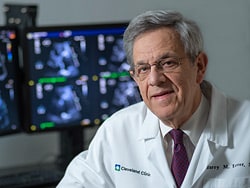VA study uncovers critical link between pain intensity and suicide attempts
New study finds pain intensity is a telling risk factor for suicide
https://www.blogs.va.gov/VAntage/67708/va-study-uncovers-link-pain-intensity-suicide-attempts/
Many factors are associated with suicide risk. These factors range from PTSD, depression and anxiety disorder to financial and interpersonal concerns to access to opioids and other lethal means, like firearms. Even when we take these risk factors into consideration, moderate to severe pain intensity is associated with suicide risk.
Veterans are a particularly vulnerable group. The suicide rate among Veterans is 1.5 times that of the general population. Also, Veterans develop chronic pain conditions at higher rates and report greater pain severity than members of the general population.
VA’s Behavioral Health Autopsy Program: Executive Summary reports pain is the most common factor Veterans experience before they die by suicide. The VISN 2 Center of Excellence (CoE) for Suicide Prevention studied the link between reported pain intensity and suicide attempts. The results may uncover how effective pain treatment can be a critical suicide prevention tactic.
Managing pain in daily life
Veterans have several treatment options through VA to cope with pain and reduce pain intensity. Nonmedication interventions are considered first-line treatments. They include physical therapy, cognitive behavioral therapy for chronic pain and chiropractic care. Medication-based treatments include nonsteroidal anti-inflammatory medications and injections. Examples are cortisone for low back pain and botulinum toxin for migraines. Opioids may be used under close monitoring when they are taken appropriately and the benefits outweigh the risks.
Strategies
Strategies that improve psychological well-being can also help Veterans cope with pain in everyday life. Veterans can discuss the following tactics with care providers to see which may work best:
- Be honest about the pain you’re experiencing. An important step in managing chronic pain is accepting that it is part of your life. Accepting the presence of pain can help you move on and engage in enjoyable and everyday activities despite that pain.
- Pace your activities. Although you may not be able to do everything you did before the pain began, try to find ways to reintroduce some activities in a moderated way and create more balance in the activities you’re doing. For example, if you plan to go for a long walk in the morning, consider taking a break mid-day to give your body time to recover and to prevent a pain flare-up. Even if you start to feel better over time, avoid overdoing it to avoid a relapse or further injury.
- Explore mindfulness. Increasing awareness of the present moment can help relieve emotional and mental tension that can intensify physical pain. Meditation and other mindfulness practices help you become more comfortable in feeling the way you feel without judgement, helping to prevent pain from taking over your thoughts and acting on autopilot.
To learn more about pain management treatment provided by VA, explore VA’s pain management webpage for Veterans.

People with higher pain intensity had lower survival rates than those who had mild pain or no pain at all.
Study findings
A CoE study looked at Veterans’ average pain intensity scores in the year after they began receiving pain specialty services to determine whether pain intensity was associated with suicide attempts. Based on data from 2012–2014, moderate and severe pain over the course of a year increased the risk of a suicide attempt, even after considering other factors like a Veteran’s history of suicide attempts.
As the graph to the right shows, those with higher pain intensity had lower survival rates than those who had mild pain or no pain at all. This close correlation between pain intensity and suicide risk and death rates suggests that reducing pain, or the perception of that pain, can help prevent Veteran suicide.
Advice for Veterans’ family members and friends
Family members and friends are often the first to realize that a Veteran may be at risk for suicide. Warning signs include changes in mood or behaviors, outward comments about suicidal thoughts or increased interest in lethal means, such as firearms and opioids. If you see these signs in a Veteran in your life:
- Start the conversation. Topics of pain and suicide can be challenging to talk about. Still, don’t be afraid to begin the conversation with the Veteran you’re concerned about. Starting the conversation can help the Veteran realize the need to address pain. It also reassures the Veteran that you’re willing to help.
- #BeThere for the Veteran and engage in healthy activities. Invite your friend or loved one to a movie or dinner or for a walk around the neighborhood. Getting a Veteran out of the house can remind them of activities they can enjoy, despite their pain. Research suggests changing a Veteran’s mindset and engaging them in activities can improve overall wellness.
Filed under: General Problems | 2 Comments »




















 Goodwin dissolves DEA suspension of Oak Hill pharmacy
Goodwin dissolves DEA suspension of Oak Hill pharmacy Joseph Goodwin
Joseph Goodwin Mike Stuart
Mike Stuart




